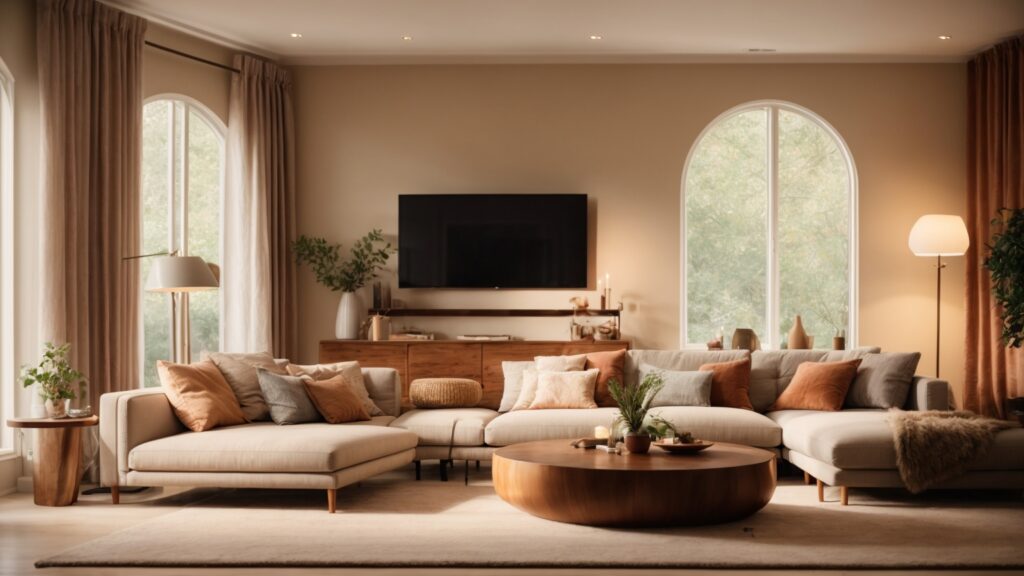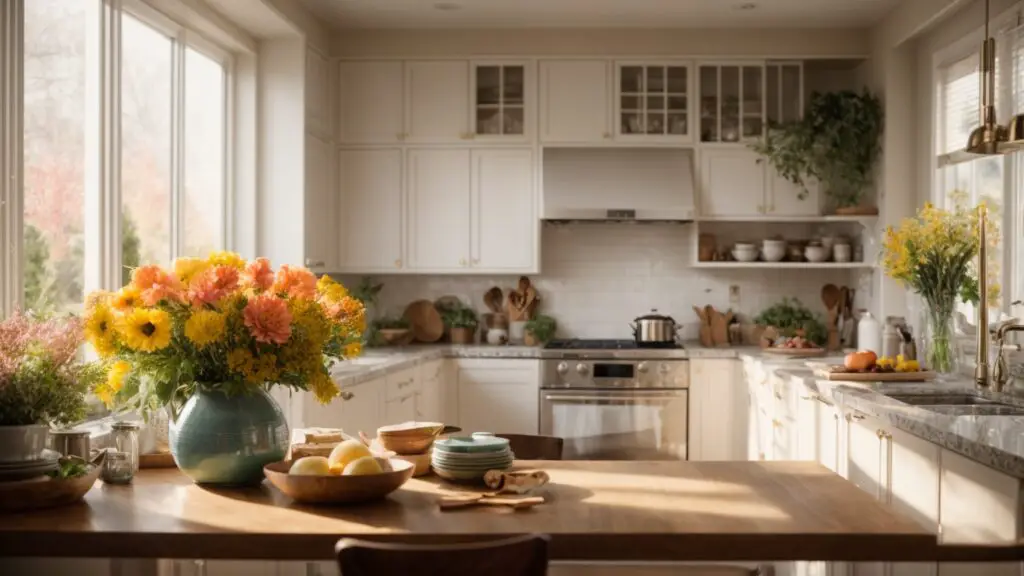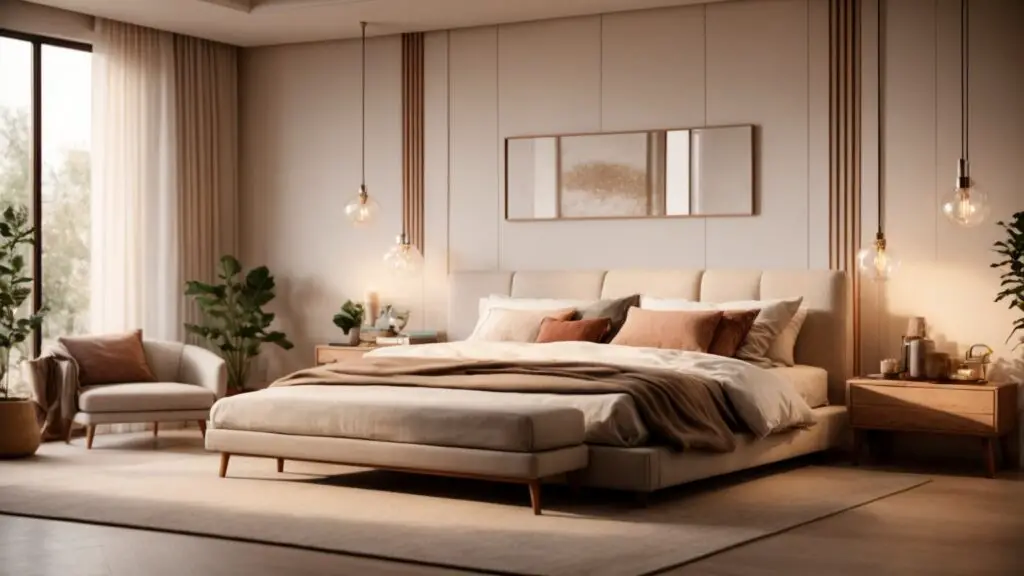Estimated reading time: 12 minutes
Introduction
What is conventional housing? This question is central for those looking into buying or living in a standard residential setup. Conventional housing covers the usual types of homes that individuals or families can own, control, and live in based on their preferences. It includes a variety of designs, from single-family homes with unique exteriors to apartment complexes that offer communal living spaces.
Exploring the conventional housing definition further, it’s clear that it’s not only about the buildings themselves but also the rules and finances that support sustainable homeownership. For example, housing authorities are crucial in setting the criteria for assistance programs, especially for households with elderly members or those with a disability. These organizations run within specific legal parameters that occupants must follow to keep their housing unit. Additionally, conventional housing involves taking care of expenses for upkeep and following the guidelines established by local laws. To fully comprehend conventional housing, it’s important to understand all these aspects, ensuring people are not only qualified to occupy or own such places but also know the rules they need to follow.
Key Takeaways
- Diversity of Styles and Locations: Traditional housing offers a wide range of options, catering to diverse preferences and lifestyles.
- Financial Implications: Buyers and investors must understand the financial aspects, including mortgages and investment potential.
- Legal and Regulatory Aspects: Navigating the legal landscape is essential for compliance and informed decision-making.
- Regional Variations: Recognizing the differences in traditional housing across urban and suburban areas helps tailor choices to individual needs.
- Future Trends: The shift towards sustainability and technology integration redefines traditional housing.
- Challenges and Opportunities: Addressing affordability and environmental concerns presents challenges and opportunities for the market.
- Consumer Insights and Market Analysis: Staying attuned to buyer preferences and market trends is key for stakeholders in the housing sector.
What is Affordable Conventional Housing
Exploring the characteristics of conventional housing reveals why these types of homes are preferred by many. The essence of conventional housing meaning includes various designs and amenities that cater to different preferences. These properties are built to operate smoothly, ensuring a comfortable and convenient lifestyle for those who live there. Owners are responsible for managing their homes according to local laws, making sure their residences abide by all necessary regulations. Furthermore, inclusivity is key, with features designed to support individuals who are disable, thus making these houses eligible for a broader audience. For more information, potential buyers are encouraged to contact us. We provide details on how our homes can suit your needs, maintaining an acceptable quality of life in line with the standards of conventional housing.
Types and Styles
- Single-Family Homes: The quintessence of traditional housing, single-family homes offer privacy and space, often featuring yards and individual utilities.
- Multi-Family Residences: Apartments and condominiums catering to those seeking community living and shared amenities.
- Townhouses: Blending the individuality of single-family homes with the communal aspects of multi-family residences.
Architectural Designs
- Traditional: Characterized by classic design elements, often reflecting regional architectural heritage.
- Modern: Emphasizing simplicity, open spaces, and functional design.
- Eco-Friendly: Incorporating sustainable materials and energy-efficient features.
Design and Architecture of Conventional Housing
In conventional housing, architectural design plays a pivotal role. From the grandeur of traditional estates to the minimalism of modern apartments, these designs reflect aesthetic preferences and cater to functional needs. Innovative architectural trends, such as smart home technology and green building practices, are increasingly integrated, reflecting evolving consumer preferences and environmental consciousness.
Demographics of Conventional Housing Residents
Conventional housing attracts a wide demographic spectrum. Families often prefer single-family homes for their space and privacy, while young professionals may gravitate towards urban apartments for proximity to work and lifestyle amenities. Traditional housing choices reflect a blend of personal, economic, and lifestyle considerations.
Location Preferences for Conventional Housing
Location is a key factor in traditional housing. Suburban areas are popular for their serene environment and family-friendly amenities, while urban locations offer convenience and access to cultural hotspots. The choice often hinges on work commute, school districts, and community vibes.
Conventional housing, with its rich tapestry of styles, designs, and locations, caters to a broad range of preferences and needs. Understanding these characteristics is crucial for anyone navigating the housing market, whether for personal or investment purposes.

Financial Aspects of Conventional Housing The Pros And Cons
The financial aspects of conventional housing clearly define the decision-making for potential home buyers. In contrast to public housing, conventional homes are influenced by market-driven housing costs, which fluctuate based on location and features. Legislation such as the housing act and federal law sets the standards these properties must meet, including insulation and enclosure requirements to ensure optimal temperature regulation and indoor air quality. Several housing programs assist purchasers via mortgage loans, making the dream of owning a home more achievable. Furthermore, designs guided by architects often incorporate passive methods to tackle energy use, improving the living space. The discussion on housing versus transportation expenses is also vital, as living closer to employment and amenities might balance out a higher upfront cost. This program provides a vital comparison framework for buyers to consider the long-term advantages and sustainability of buying a house.
Overview of Financial Considerations
The financial landscape of conventional housing is a complex yet crucial aspect for buyers and investors. This section delves into the pricing trends, mortgage options, and investment potentials, providing a comprehensive understanding of the economic side of traditional housing.
Pricing Trends and Mortgage Options
- Market Dynamics: Housing prices are influenced by location, economic conditions, and interest rates.
- Conventional Loans: These are non-government-backed loans, often requiring a higher down payment but offering more flexibility in terms and conditions.
- Down Payment and Interest Rates: A higher down payment typically leads to better interest rates, reducing long-term costs.
Cost Comparison with Affordable Housing
When comparing traditional housing to affordable housing, the cost differences are significant. Conventional housing usually requires a larger financial commitment in terms of down payment and ongoing mortgage payments. However, it often offers greater long-term value and investment potential.
Comparative Cost Analysis
| Housing Type | Average Down Payment | Average Mortgage Rate | Long-term Investment Value |
|---|---|---|---|
| Conventional Housing | 20% | Varies | High |
| Affordable Housing | 3-5% | Government-Subsidized | Moderate |
Investment Potential of Conventional Housing
Conventional housing is not just a home; it’s an investment. Over time, these properties often appreciate in value, providing substantial returns. The potential for rental income and capital appreciation makes traditional housing attractive for many.
Understanding the financial intricacies of traditional housing is essential for making informed decisions. From assessing mortgage options to evaluating investment potential, this knowledge is vital for anyone entering the traditional housing market.
Legal and Regulatory Framework Of Public Housing
Overview of Legal Aspects
The legal and regulatory environment of traditional housing encompasses a range of laws and regulations that govern everything from property rights to tenant-landlord relationships. This section provides an overview of these legal frameworks, emphasizing their importance in the traditional housing market.
Zoning and Planning Laws
Zoning laws significantly impact the development and use of traditional housing. These regulations determine what can be built where influencing the layout of communities and the types of housing available in different areas.
Case Study: Impact of Zoning on Housing Development
A case study from a major city illustrates how zoning changes led to a surge in traditional housing development, transforming a previously industrial area into a thriving residential community.
Key Regulations and Compliance Requirements
- Building Codes: Ensure safety and compliance with structural standards.
- Environmental Regulations: Address ecological impacts and sustainability.
- Permitting Process: Necessary for new constructions and major renovations.
Impact of Housing Policies
National and local housing policies are critical in shaping the traditional housing market. Policies like tax incentives for homeownership or restrictions on rent control can significantly affect market dynamics.
Tenant Rights and Responsibilities
Understanding tenant rights and responsibilities is crucial for landlords and tenants in conventional housing. This includes lease agreements, rent payments, maintenance obligations, and eviction procedures.
Navigating the legal and regulatory landscape is essential for anyone in traditional housing. Awareness of these laws and policies helps ensure compliance, protect investments, and foster harmonious tenant-landlord relationships.

Conventional Housing in Different Regions
In the United States, the Department of Housing and Urban Development (HUD), as outlined in Title 24 CFR Section 62, plays a crucial role in ensuring that conventional housing meets certain standards. This includes the assessment for ventilation, heating systems, and thermal energy requirements. Due to the variable climate conditions across different regions, the need for efficient heating systems becomes more pronounced in colder areas. These systems not only fulfill the need to maintain a comfortable relative humidity but also significantly reduce the energy demand by incorporating heat recovery mechanisms.
When we take a closer look at the design and implementation process, one can see the importance of screening and verification procedures conducted by HUD to enable a home to meet or exceed the median comfort standards. This involves a thorough checkout of the home’s ability to detach from hazard through proper sewer systems and offsite transport facilities, ensuring the safety and well-being of its residents. For newly constructed homes, the focus is also on making sure that the structural integrity can uphold against different environmental pressures, alongside minimizing energy consumption.
The eligibility for social security benefits also intersects with housing quality, as individuals and families require adequate living conditions that support their health and safety. This has led to an emphasis on designing homes that can efficiently manage and recycle thermal energy, leveraging technology such as advanced heat recovery and ventilation systems. The concept of energy demand becomes a pivotal point in this context, pushing toward the development of homes that are not only sustainable but are also capable of meeting the diverse needs of their occupants.
Urban vs. Suburban Conventional Housing
The characteristics of conventional housing vary significantly between urban and suburban regions. This section examines these differences, offering insights into how location impacts the nature of traditional housing.
Comparative Analysis: Urban and Suburban Housing
- Urban Areas: Characterized by higher-density living, often in apartments or townhouses, with close proximity to amenities and workplaces.
- Suburban Areas: Typically feature single-family homes with larger living spaces and yards, offering a quieter, more family-oriented environment.
Urban vs. Suburban Housing Features
| Feature | Urban Housing | Suburban Housing |
|---|---|---|
| Density | High | Low |
| Property Type | Apartments, Townhouses | Single-Family Homes |
| Amenities | Close to Workplaces, Cultural Centers | Family-Friendly, Larger Yards |
| Lifestyle | Fast-Paced, Convenient | Relaxed, Community-Focused |
Conventional Housing in Urban Areas
In urban areas, conventional housing often takes the form of high-rise apartments and modern condominiums. These properties cater to individuals seeking a dynamic lifestyle with easy access to work, entertainment, and urban amenities.
Expert Opinion: Evolution of Urban Housing
“Urban traditional housing has evolved dramatically, focusing on maximizing space and incorporating sustainable practices,” says a real estate expert. This evolution reflects changing preferences and environmental considerations.
Case Study: Successful Urban Housing Project
A case study of a successful urban housing project highlights the integration of smart home technologies and community spaces, illustrating the innovative approaches in urban conventional housing development.
The comparison between urban and suburban traditional housing reveals distinct differences in lifestyle, property types, and amenities. Understanding these regional variations is crucial for homebuyers and investors in making informed decisions.
Future Trends in Conventional Housing
Predictions and Upcoming Trends
The landscape of conventional housing is constantly evolving, influenced by technological advancements, sustainability practices, and shifting economic conditions. This section highlights the key trends poised to shape the future of traditional housing.
Technological Advancements
- Smart Home Technologies: Integrating AI and IoT in conventional housing enhances home automation and energy efficiency.
- Sustainable Building Materials: The growing emphasis on sustainability drives using eco-friendly materials in construction.
Sustainability Practices
- Energy Efficiency: Incorporating energy-efficient appliances and solar panels is becoming more common in conventional housing.
- Green Spaces: Incorporating natural elements and green spaces in housing designs promotes environmental sustainability and enhances living quality.
Impact of Economic Changes
Economic fluctuations significantly impact the conventional housing market. Changes in interest rates, employment rates, and economic policies can affect affordability and market dynamics.
Changing Consumer Preferences
Homebuyers prefer more sustainable, tech-integrated, and flexible living spaces. These changing demands are influencing the design and functionality of conventional housing.
Expert Insight: Market Analyst on Future Trends
“A significant shift towards sustainability and technology integration is reshaping the conventional housing market,” notes a market analyst. This trend is expected to continue, driven by consumer demand and environmental considerations.
The future of traditional housing is marked by innovation and adaptability. Staying abreast of these trends is vital for industry professionals, investors, and consumers to navigate the evolving housing landscape effectively.

Challenges and Opportunities in Conventional Housing
Navigating Market Complexities
The conventional housing market, while offering numerous opportunities, is not without its challenges. This section delves into the key obstacles and potential solutions, providing a balanced view of the current state of the market.
Addressing Affordability Issues
Affordability remains a major challenge in conventional housing. Rising property prices and stringent loan requirements often put traditional homes out of reach for many potential buyers. Solutions like innovative financing models and government incentives are being explored to make homeownership more accessible.
Innovative Design and Construction Techniques
- Modular Construction: Streamlining the building process and reducing costs.
- Eco-Friendly Designs: Balancing environmental considerations with modern living requirements.
Urban Development Impact
Rapid urbanization poses both challenges and opportunities for conventional housing. While it leads to higher demand and potential value appreciation, it raises concerns about urban sprawl, infrastructure strain, and environmental impact.
Environmental Considerations
Conventional housing developments increasingly need to address environmental sustainability. This involves eco-friendly construction practices and considerations about the broader ecological impact of housing developments.
Government Initiatives
Government policies and initiatives are crucial in shaping the traditional housing market. These may include zoning laws, tax incentives, and support for affordable housing projects.
Table: Key Challenges and Opportunities in Conventional Housing
| Challenge | Opportunity |
|---|---|
| Affordability | Innovative Financing |
| Urban Development | Value Appreciation |
| Environmental Impact | Eco-Friendly Construction |
Community Involvement and Development
The role of the community is pivotal in conventional housing development. Community feedback and involvement can lead to more harmonious and sustainable neighborhood designs.
Real-World Quote: Community Leader on Housing Development
“A collaborative approach between developers, local authorities, and residents is crucial for successful housing projects,” emphasizes a community leader.
The conventional housing market is a dynamic field with various challenges and opportunities. Addressing these effectively requires innovative solutions, policy support, and community engagement.
Consumer Insights and Market Analysis
Understanding Buyer Behavior
Various factors influence the decision-making process of homebuyers in the traditional housing market. This section provides insights into consumer behavior, market segmentation, and current sales trends, offering a comprehensive view of the market dynamics.
Buyer Preferences and Market Segmentation
- Buyer Preferences: Factors such as location, property size, amenities, and environmental considerations are increasingly influencing buyer decisions.
- Market Segmentation: The traditional housing market is segmented into various categories, including first-time buyers, upsizers, downsizers, and investors, each with unique needs and preferences.
Sales Trends and Dynamics
The sales trends in the conventional housing market can fluctuate based on economic conditions, interest rates, and consumer confidence. Analyzing these trends helps in understanding the market’s current state and future direction.
Role of Technology in Market Dynamics
Technological advancements, particularly in online platforms and virtual tours, have revolutionized how consumers search for and purchase homes. This shift towards digital engagement is reshaping the conventional housing market.
Case Study: Technology-Driven Market Changes
A detailed case study illustrates how a real estate platform leveraged technology to enhance the home buying experience, increasing sales and customer satisfaction.
Regional Market Variations
The conventional housing market varies significantly from region to region. Local economic conditions, cultural preferences, and governmental policies influence these regional differences.
Impact of Global Economic Trends
Global economic trends, such as international trade policies and foreign investment flows, can substantially impact the conventional housing market.
Expert Quote: Market Analyst on Regional Variations
“Different regions exhibit unique market characteristics, shaped by local economic, cultural, and policy factors,” notes a market analyst.
Understanding consumer insights and market analysis is key to navigating the conventional housing market. Buyers, sellers, and industry professionals must recognize buyer preferences, leverage technology, and acknowledge regional variations.

Sustainability and Environmental Considerations
Embracing Eco-Friendly Housing
In an era where environmental consciousness is on the rise, sustainability has become a crucial aspect of conventional housing. This section explores the sustainable practices integrated into traditional housing and their impact on the environment and communities.
Energy Efficiency and Green Building Practices
- Energy-Efficient Appliances: Adoption of appliances that reduce energy consumption and lower utility bills.
- Sustainable Materials: Utilization of eco-friendly materials in construction, reducing environmental impact.
Community and Environmental Impact
The development of conventional housing has a significant effect on local communities and the environment. Incorporating green spaces, minimizing carbon footprint, and ensuring the sustainability of resources are key considerations.
Case Study: Sustainable Conventional Housing Project
An in-depth look at a housing project that successfully implemented sustainable practices, demonstrating the feasibility and benefits of eco-friendly conventional housing.
Overview of Sustainable Practices in Conventional Housing
| Sustainability Aspect | Implementation Method | Environmental Benefit |
|---|---|---|
| Energy Efficiency | Solar Panels, Smart Thermostats | Reduced Energy Consumption |
| Material Sustainability | Recycled Materials, Green Roofs | Lower Carbon Footprint |
| Community Impact | Green Spaces, Community Gardens | Enhanced Living Quality |
Future of Eco-Friendly Housing
The trend toward sustainability in conventional housing is expected to grow, driven by consumer demand, environmental awareness, and technological advancements. Future developments in traditional housing are likely to prioritize eco-friendly designs and practices.
Sustainability and environmental considerations are increasingly shaping the landscape of conventional housing. Embracing these eco-friendly practices benefits the environment and enhances the quality of life for residents, making it a pivotal focus for future housing developments.
- Reading with 3 Color Lighting Modes
- Anti-Glare Lens to Reduce Eye Strain-Perfect for Small Prints
- Aging Eyes, Stocking Stuffer for Low Vision and Seniors
Conclusion
Understanding this is essential for navigating the housing market effectively, whether you’re looking to buy or invest. Conventional housing includes a broad range of property types, from single-family homes to multi-family residences, each catering to diverse needs and preferences. These properties are not just places to live; they are investments that can appreciate over time, offering potential for rental income and capital gains. It’s vital for buyers to grasp the financial aspects, like mortgages and market dynamics, which can significantly impact their decision-making process.
As we look to the future, conventional housing continues to evolve, integrating sustainable practices and smart technologies that enhance living conditions and respect environmental concerns. Sustainable building materials and energy-efficient designs are no longer just trends but necessities that shape the development of new homes. Understanding these aspects, alongside the legal and regulatory frameworks that govern property ownership, is crucial for anyone involved in the housing market. Ultimately, the success in this sector hinges on recognizing and adapting to these ongoing changes and challenges.

James Dunnington leads the James Dunnington Collection, featuring five unique blogs: a practical Pet Care Guide, an enlightening Ancient History Blog, a resourceful Home Improvement Guide, a cutting-edge Tech Innovation Guide, and a strategic Online Money Making platform. Each site delivers valuable insights designed to empower and inform. For updates and more tips, visit our Contact Us page to sign up for our newsletter, ensuring you never miss out on the latest content from any of these dynamic fields.

